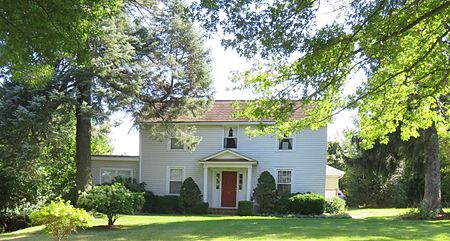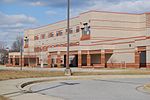Brother's Partnership

Brother's Partnership (also called Peter Harmon House) is a historic house in Ellicott City, Howard County, Maryland. The house is located on a 600-acre tract patented in 1734 by Joshua Dorsey named "Brother's Partnership". The house built on the property is a wooden structure with L shaped additions. James and Harriet Shipley sold the 66-acre property to Peter A. Harmon and the neighboring Curtis-Shipley Farmstead in 1874. In 1890 a kitchen addition was built onto the house. In 1927 a major restoration was completed. The property has been subdivided with no visible signs of the original farm. The house is surrounded by modern buildings in a residential cul-de-sac.
Excerpt from the Wikipedia article Brother's Partnership (License: CC BY-SA 3.0, Authors, Images).Brother's Partnership
Brothers Partnership Court, Columbia Long Reach
Geographical coordinates (GPS) Address Nearby Places Show on map
Geographical coordinates (GPS)
| Latitude | Longitude |
|---|---|
| N 39.212777777778 ° | E -76.803055555556 ° |
Address
Brothers Partnership Court 5725
21045 Columbia, Long Reach
Maryland, United States
Open on Google Maps






